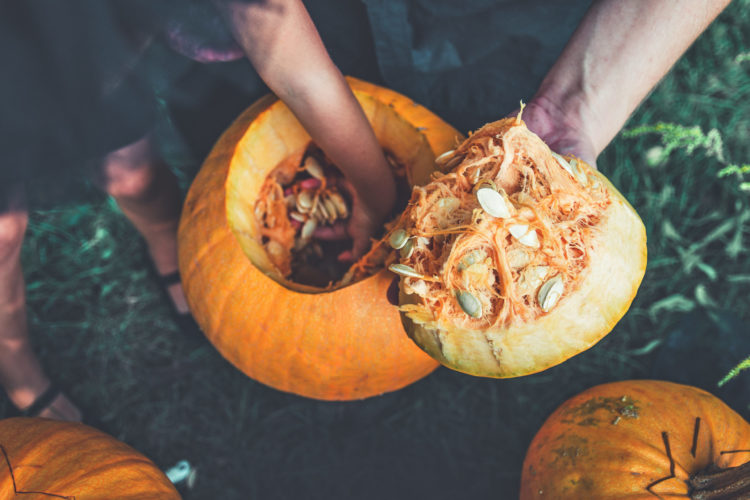
During the months of October and November, pumpkins become the main centerpiece in many homes. For many of us, it wouldn’t be fall without having a little creative fun with a pumpkin. We bake with them, we decorate our homes with their fun colors and textures, and we put extra thought into carving our neighborhood’s greatest entryway masterpiece. There’s nothing quite as nostalgic as carving pumpkins. Whether you’re a child or grown adult, pumpkin carving is an activity loved by many.
The majority of the 1.5 billion pounds of fresh pumpkin varieties grown in the United States each year are sold for Halloween. Increasing pumpkin sales during the fall months also means an increase in people visiting the emergency room with hand injuries from slicing into a pumpkin. Various injuries can occur when dealing with a pumpkin’s hard flesh and a sharp cutting utensil. The Center’s hand surgeons see several injuries from pumpkin carving every year. Most are minor, but the more serious ones that make it to a hand surgeon can involve injury to your tendons or nerves and require surgery.
Common Hand Injuries From Pumpkin Carving
- Minor cuts or lacerations in the non-dominant hand
- Stab and puncture wounds in the hand
- Severed tendons and ligaments
- Permanent nerve damage in hands and fingers
- Flexor and extensor tendon injuries
- Loss of function and motion in the hand
To avoid hand injuries this fall season, here are some recommendations from the American Society for Surgery of the Hand:
CARVE IN A CLEAN, DRY, WELL-LIT AREA
Wash and thoroughly dry all of the tools that you will use, including: carving tools, knife, cutting surface, and your hands. Any moisture on your tools, hands, or table can cause slipping that can lead to injuries.
ALWAYS HAVE ADULT SUPERVISION
All too often, we see adolescent patients with injuries because adults feel the kids are responsible enough to be left on their own. Even though the carving may be going great, it only takes a second for an injury to occur.
LEAVE THE CARVING TO ADULTS
Never let children do the pumpkin carving. Instead, maybe let kids draw a pattern on the pumpkin and have them be responsible for cleaning out the inside pulp and seeds. When the adults do start cutting, they should always cut away from themselves and cut in small, controlled strokes.
SHARPER IS NOT BETTER
A sharper knife is not necessarily better, because it often becomes wedged in the thicker part of the pumpkin, requiring force to remove it. An injury can occur if your hand is in the wrong place when the knife finally dislodges from the thick skin of the pumpkin. Injuries are also sustained when the knife slips and comes out the other side of the pumpkin where your hand may be holding it steady.
USE A PUMPKIN CARVING KIT
Special kits are available in stores and include small, serrated pumpkin saws that work better because they are less likely to get stuck in the thick pumpkin tissue.
HELP FOR AN INJURY
Should you cut your finger or hand, bleeding from minor cuts will often stop on its own by applying direct pressure to the wound with a clean cloth. If continuous pressure does not slow or stop the bleeding after 15 minutes, an emergency room visit may be required.
While most of the injuries from pumpkin carving may only need stitches, others may need to be seen by a hand specialist, such as a hand surgeon, who can restore the hand’s movement and function.





